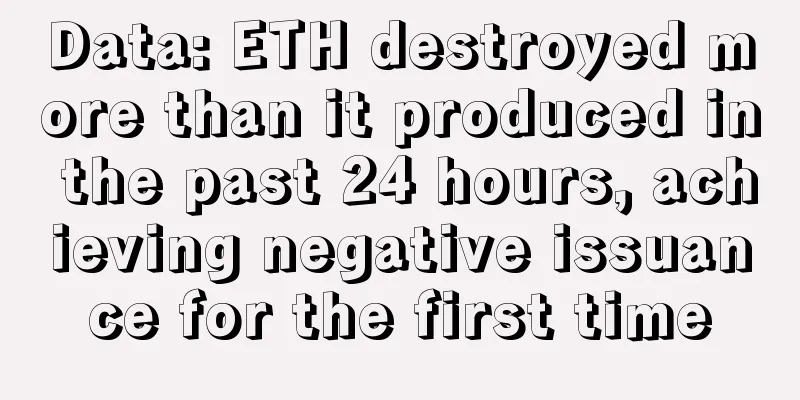Grayscale: Why we are optimistic about Bitcoin's valuation in 2024

After losing ground in 2022, Bitcoin rebounded 130% in 2023 and is on track to be one of the best performing major assets of the year. The recovery in cryptocurrencies continued in November as financial markets relaxed on various macro risks. In the digital asset market, this has led to a shift in market leadership from Bitcoin to the broader crypto market sector. Grayscale Research believes that cryptocurrency fundamentals are gradually improving and the supply of major tokens is relatively tight (for example, due to Bitcoin's current ownership structure). This may be consistent with rising cryptocurrency valuations in the coming year, especially if the Federal Reserve completes its tightening policy and the US economy can avoid a "hard landing" (recession). Financial markets appeared to relax a bit on various tail risks last month, helping previously underperforming assets to rebound. For example, positive signs in the Middle East conflict appeared to reduce concerns about wider regional chaos, and assets tied to the Israeli economy rallied as a result (Chart 1). Similarly, long-term Treasury prices rose (yields fell) after the Treasury Department announced a smaller-than-expected increase in borrowing demand. Consumer price inflation also continued to decline, raising hopes for an eventual Fed rate cut and a potential “soft landing” for the U.S. economy. Bitcoin has underperformed this month on a volatility-adjusted basis (it has outperformed since late August), but still posted a 9% gain (Ethereum is up 13% in November). Figure 1: Lower tail risks drove asset market recovery in November Broader Crypto RecoveryUntil recently, Bitcoin had outperformed other crypto assets due to demand for it as a digital alternative to gold and optimism about the approval of a spot Bitcoin ETF. However, the leadership of the cryptocurrency market changed in November as the rally expanded beyond Bitcoin. According to the FTSE Grayscale Crypto Sector Index Series, the best performing segments last month were the Financial Crypto Sector, the Utilities and Services Crypto Sector, and the Consumer and Culture Crypto Sector (Exhibit 2). Supporting the Financial Crypto Sector Index was Thorchain’s RUNE token, which rose 131%; the protocol runs the decentralized exchange ThorSwap, which has seen increased trading activity recently. For the Consumer and Culture crypto sector, November’s gains reflected growth in gaming-related tokens ImmutableX and Illvium. Illuvium (up 119%) launched its eponymous game on the Epic Games Store on November 28, while ImmutableX (up 87%), a layer 2 blockchain on Ethereum for crypto gaming applications, announced a partnership with Ubisoft. Chart 2: Financial, Consumer and Cultural Cryptocurrency Sectors Outperformed the Market In addition to the latest price developments, the market has renewed its focus on the intersection between cryptocurrencies and artificial intelligence (AI) technology following the leadership turmoil at OpenAI. We believe there may be synergies between public blockchains and AI technology. Specifically, blockchains can combat or address potential social risks posed by AI, such as the proliferation of deep fakes, bots, and misinformation. Additionally, decentralized computing protocols can combat centralized control of powerful AI models that hold sensitive personal information (see our background report, The Convergence Between AI and Cryptocurrency, for more details). Major crypto projects that Grayscale Research believes are relevant to the AI theme include Akash and Render (GPU sharing), Worldcoin (identity), and Bittensor (open architecture AI development). Along with rising valuations, fundamentals have improved across a range of cryptocurrency sectors. For example, Bitcoin’s hash rate (a measure of the total amount of computing power securing the network) reached an all-time high in November (Exhibit 3). We attribute this trend to miner upgrades ahead of next year’s Bitcoin halving, rising token prices (which make older machines profitable), and an oversupply of relatively new machines operated by mining equipment manufacturers. We would also credit increased stablecoin activity as a reason for improving cryptocurrency fundamentals. The total stablecoin market capitalization increased by $4 billion last month, and the amount of gas used in stablecoin transactions also increased. Chart 3: Bitcoin hash rate hits record high Fundamentals driving Bitcoin priceAfter a period of sharp gains, we now describe the positioning of active cryptocurrency traders as relatively “long.” For example, open interest in CME-listed Bitcoin futures hit a record high in November, which may indicate increasing institutional activity in the market (Chart 4). Meanwhile, cryptocurrency exchange-traded products (ETPs)—both futures products in the United States and spot products overseas—attracted another month of net inflows. Grayscale Research estimates that global cryptocurrency ETP net inflows totaled $1.3 billion in November, reaching $2.2 billion for the full year. Chart 4: CME Bitcoin futures open interest hits record high In terms of the short-term market outlook, the “long” trader positioning means that it may be harder for prices to rise further. Major crypto token prices have appreciated significantly and now reflect a more positive outlook. In addition, the outlook is subject to risks that could derail this year’s positive trend. These include a “hard landing” (recession) of the U.S. economy, a resumption of rate hikes by the Federal Reserve or a smaller-than-expected rate cut by the Federal Reserve, or a prolonged delay in U.S. market regulators approving a spot Bitcoin ETF. Each of these risks could hinder the cryptocurrency’s recovery, at least in the short term. That being said, we believe the core picture of financial markets and the economy is likely to be favorable for Bitcoin and other crypto assets. Prior to potential investor inflows into U.S. spot ETF products, Bitcoin’s supply was relatively “tight.” For example, according to Glassnode data, the share of Bitcoin supply held by short-term speculators reached a record low (Chart 5). Similarly, Grayscale Research’s analysis also suggests that a large portion of Bitcoin is held by entities that may be slow to sell into appreciating markets (see Uncovering Bitcoin’s Ownership Landscape for more details). Next year’s Bitcoin halving will also limit the growth of new token supply. We believe that the combination of an inelastic Bitcoin supply and potential new investor inflows should have a positive impact on valuations. Chart 5: Long-term holders hold a larger share of Bitcoin supply More important than the technical backdrop, however, is the fundamental outlook for Bitcoin. Bitcoin is a macro asset that many consider to be a digital alternative to physical gold. As such, its price can be affected by factors that drive demand for digital gold, including Federal Reserve monetary policy, the health of the U.S. economy, and the soundness of the fiat monetary system. The market’s reaction to the election of Javier Millais is just the latest example of the impact such factors can have. Despite uncertainty about the macro outlook, economists unanimously expect the Federal Reserve to cut interest rates next year and for the U.S. economy to avoid a recession. Next year will also see the U.S. presidential election, which we expect to focus on excessive government borrowing, the independence of the Federal Reserve, and other issues that affect the long-term value of the U.S. dollar. Grayscale Research expects this combination to have a positive impact on demand for both physical and digital gold, and could coincide with an uptick in Bitcoin’s valuation. |
>>: Why is too much "good news" bad for U.S. stocks?
Recommend
Do men with short little fingers have a miserable life? What does a short little finger mean?
We all have different looks and physical features...
The shape of your philtrum tells your life's destiny
The shape of your philtrum tells your life's ...
How to remedy and resolve horizontal lines on the root of the nose
We all know that the bridge of the nose is very i...
Is the fate of a woman with s-shaped eyebrows good?
1. Women with scowls are smart. In fact, women wi...
If you can't accept a 60% drop, you are not qualified to get a 6000% increase.
Digital currency has been a new global thing sinc...
How is the love luck of a woman with a hooked nose?
Women with hooked noses are less popular, mainly ...
What are the characteristics of a lonely man?
If someone is willing to accompany you for life, ...
What kind of people are born with bad luck in investment?
Whether a person is prone to losing money can be ...
How should women break the emotional curse of the Sichuan Palm?
In palmistry, there is a type of palm called the &...
Palmistry of marriage lines for unhappy marriages
Our palmistry can predict many things. In fact, t...
What will happen with Bitcoin’s 2020 halving?
Time travels to May 23, 2020. While lovers are st...
Physiognomy analysis: People who easily trust the opposite sex
Physiognomy analysis: People who easily trust the...
A complete guide to fortune telling if there is a mole at the corner of the eye
A complete guide to fortune telling if there is a...
What does Tianji entering the life palace represent?
Tianji Star is one of the three stars in the Sout...
Women with Yin Xi lines have good fortune
Women with Yin Xi lines on their faces are often ...









